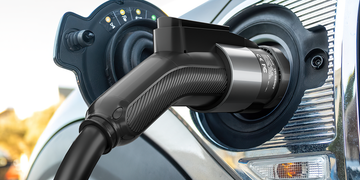What are the components of EV charging station? Key to the widespread adoption of EVs is the development of efficient and accessible charging infrastructure. EV charging stations serve as the backbone of this infrastructure, providing EV owners with convenient access to power their vehicles. Let's delve into the essential components that make up these charging stations.
Power Supply Unit (PSU):
At the heart of every EV charging station is the power supply unit. This component converts the alternating current (AC) from the grid into the direct current (DC) required to charge the vehicle's battery. The PSU's capacity determines the charging speed, with higher capacity units enabling faster charging rates.
Charging Cable and Connector:
The charging cable and connector are the physical links between the charging station and the EV. These components come in various shapes and sizes depending on the charging standard adopted by the station. Common connector types include Type 1 (SAE J1772), Type 2 (IEC 62196), CHAdeMO, and Combined Charging System (CCS).
User Interface:
EV charging stations are equipped with user interfaces to facilitate interaction between the EV owner and the charging station. This interface typically includes a touchscreen display or buttons for initiating the charging process, selecting charging options (such as fast or standard charging), and providing feedback on charging status and session details.

Authentication and Payment Systems:
To ensure secure access to the charging station and enable payment for the electricity consumed, authentication and payment systems are integrated into EV charging stations. This may involve RFID cards, mobile apps, or credit card readers, allowing users to authenticate themselves and authorize the charging session.
Monitoring and Control Systems:
Monitoring and control systems are essential for managing the operation of EV charging stations efficiently. These systems collect data on charging sessions, monitor station performance, and enable remote control and diagnostics. They also support features such as load management to optimize charging infrastructure utilization and minimize grid impacts.
Safety Features:
Safety is paramount in EV charging station design. Various safety features are incorporated to protect users, vehicles, and the surrounding environment. This includes mechanisms to prevent overheating, overcurrent, and overvoltage conditions, as well as ground fault protection and emergency stop buttons for immediate shutdown in case of emergencies.
Networking and Connectivity:
Networking and connectivity play a crucial role in enabling smart charging functionalities and remote management of charging stations. EV charging stations are often equipped with communication modules that allow them to connect to centralized management platforms, enabling features such as scheduling, remote firmware updates, and integration with renewable energy sources.
Physical Enclosure and Mounting:
EV charging stations are housed within sturdy enclosures designed to withstand outdoor conditions and protect the internal components from environmental elements and vandalism. Mounting options vary, with stations available in wall-mounted, pedestal, or standalone configurations to suit different installation requirements.
Accessibility Features:
Accessibility features ensure that EV charging stations are inclusive and usable by individuals with disabilities. This includes considerations such as wheelchair-accessible height and reach for user interfaces, tactile markings, audible signals, and clear signage for navigation.
What are the components of EV charging station? In conclusion, EV charging stations comprise a range of components that work together to provide EV owners with a seamless charging experience. From the power supply unit to the user interface, authentication systems, safety features, and connectivity options, each component plays a crucial role in supporting the transition to electric mobility. As technology advances and the EV charging infrastructure continues to evolve, these components will undergo further refinement to meet the growing demands of an electrified transportation ecosystem.





